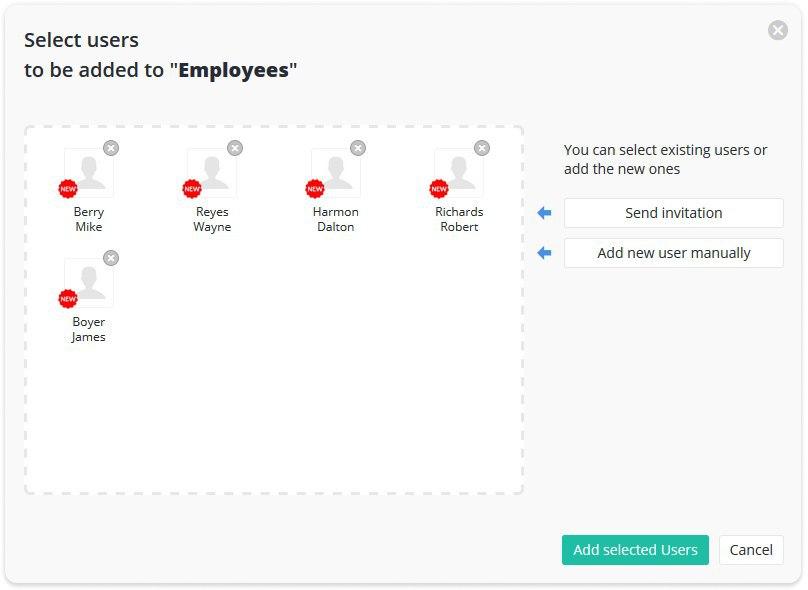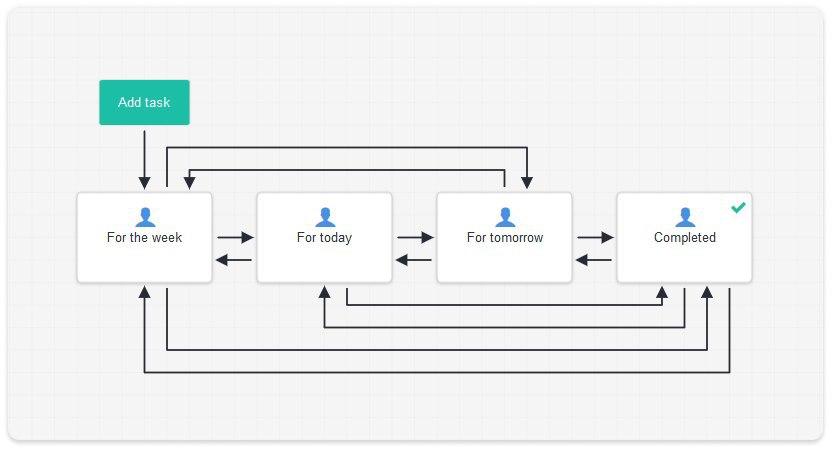We are glad to see you among our users!
Unlike many applications that help companies with day-to-day task management, Neaktor does not take much time to learn. We are constantly improving so you can get started as quickly as possible.
Now that you created your account the question is: where to begin? Let’s briefly go over the main features.
1. You can add your colleagues to the application right after your account has been created.
With trial period we give you the opportunity to try all Neaktor features for free and decide what pricing plan is right for you. During the trial period, you can add up to 6 users.

Adding new users will take just a few minutes. We have described how to do this in this article. As soon as you add users, in the “Tasks” tab you can assign your first task. Usually, adding simple tasks is not enough, with this we moving on to the next step.
2. Now it is time for some homework.
When a company starts using a business process management system, it becomes clear that simple task lists or spreadsheets are no longer enough. Especially when the number of tasks is constantly growing, and each task involves several employees from different departments. Neaktor will easily solve those problems due to flexible business process settings.
For our “homework”, first, let’s determine what your company needs from the management system. For example:
- Marketing agency or a media outlet may want to digitize the process of preparing articles for publication
- Sales department may be interested in automating customer relations tasks
- HR department would like to have a tool that will allow for convenient work with employee profiles, managing job openings, candidate interviews and other activities
Make a small list of requirements. Ideally, sketch out a couple of diagrams of how those tasks should be structured. For example:

3. When you have formalized the processes, you can start adding them to Neaktor:
- Now go to the Tasks tab and configure the rules by which tasks will be performed. Those rules are called business process models. You can configure different models for different types of tasks.
- Don’t forget to add users as participants.
- Start assigning tasks to users and watch those tasks go through processing stages. Remember, you can always go back to the task execution rule settings and adjust them as necessary.
- Don’t be afraid to experiment with Neaktor
4. Creating projects
If you have a lot of tasks that are different in nature, then your Tasks tab can become a little overcrowded. It makes sense to break those tasks into different projects. A project can be described as a folder in which you store your tasks that follow different processes.
Example:
- You can create a separate project to manage the tasks of each of the company departments. The accounting department will manage its tasks in one project, marketing in the other, you will have your administrative tasks in the separate project as well.
- You can also use projects the following way: in one project you store a list of your products, in another one, customer accounts, in the third one, business transactions. You can still link tasks from different projects by referencing them through the “Linked task” field.
5. Now you are ready to get started!
You have learned how to create projects and rules(business process models) by which your tasks will be executed. Now you just need to add the rest of the required processes and start working. As you go, you will adjust processes and become familiar with the other features of Neaktor.
Contact us!
If you have questions or need assistance with digitizing your processes, email us at contact@neaktor.com. We will always be happy to help you!